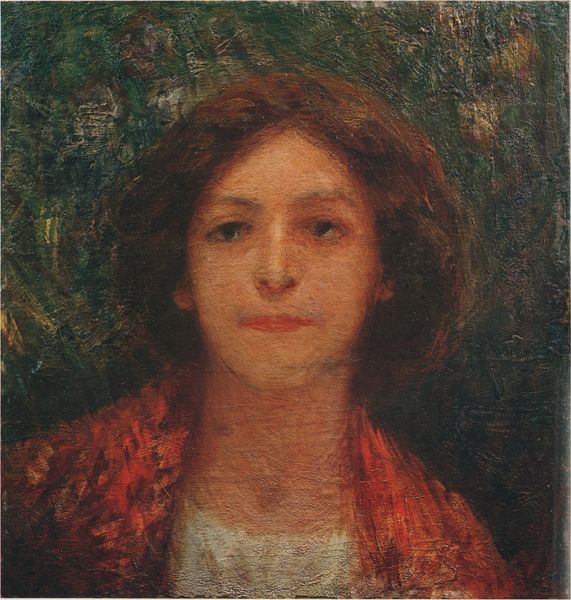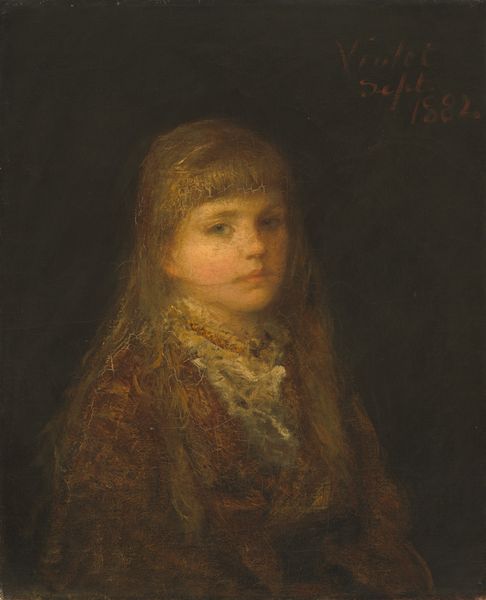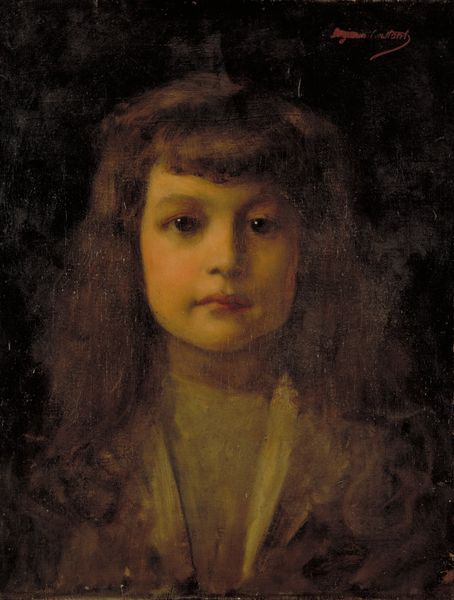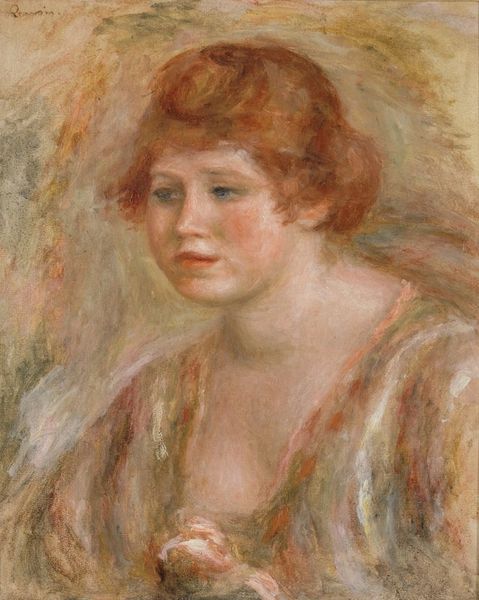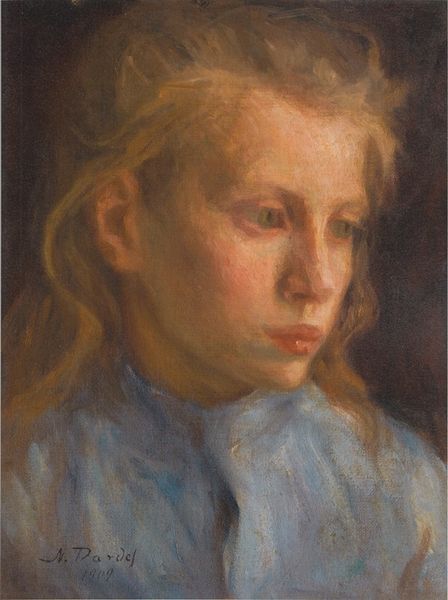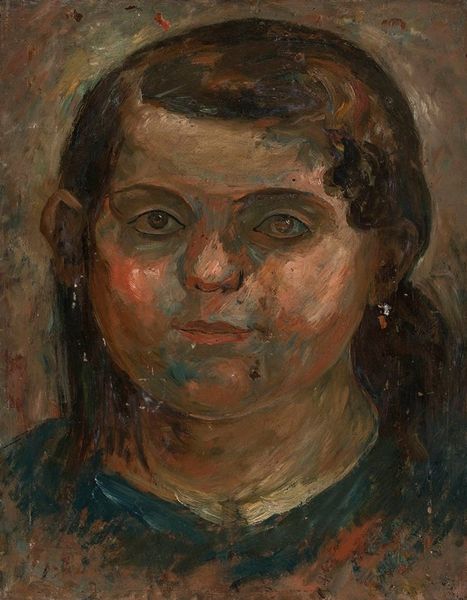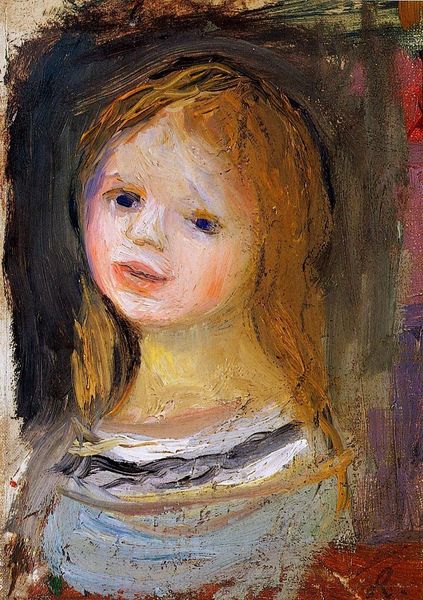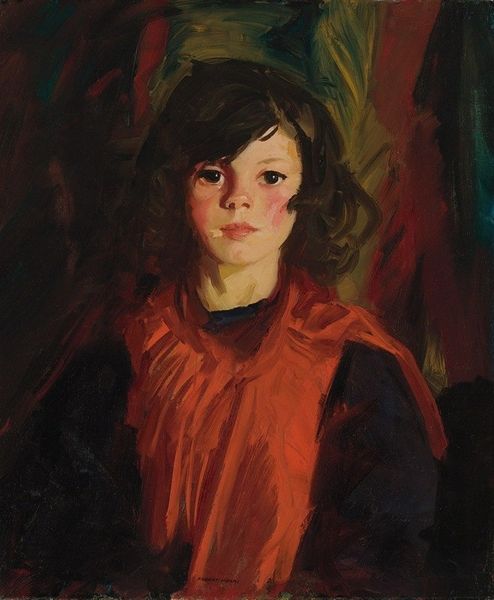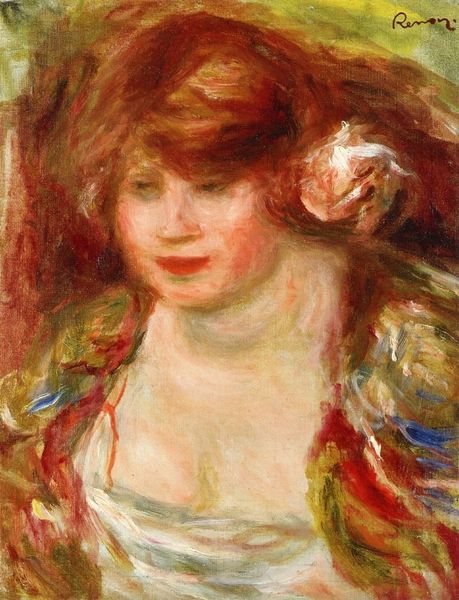
#
figurative
#
possibly oil pastel
#
oil painting
#
portrait reference
#
portrait head and shoulder
#
animal drawing portrait
#
portrait drawing
#
facial portrait
#
portrait art
#
fine art portrait
#
digital portrait
Copyright: Public Domain: Artvee
Editor: This is Alice Pike Barney's "Bertha," and it looks to be some kind of pastel or chalk drawing, although the museum doesn’t specify the exact date or materials. There’s a delicacy to the lines that I find really captivating. What's your initial read of this piece? Curator: What strikes me is the artist's decision to portray "Bertha" not just as an individual, but as a subject embedded within a network of social expectations and artistic conventions. Think about portraiture at the turn of the century. Who got their portrait painted? How did they want to be seen? And how does Barney play with or subvert those norms? Editor: That's a great point about subverting norms. I mean, even the inscription of "Bertha" at the top feels almost casual, like graffiti, clashing with the formality often associated with portraiture. Curator: Exactly! And consider the artistic circles Barney inhabited. She was deeply engaged with Symbolism and early modernist aesthetics. How do you see that reflected in this piece? The dreamlike quality, perhaps, or the emphasis on inner states rather than strict representational accuracy? It feels to me like it seeks a feeling, a sense of presence that goes beyond likeness. Editor: I definitely see that now. It's less about capturing Bertha's physical appearance perfectly, and more about conveying a mood or an idea about her. The muted colors and soft focus contribute to that ethereal feeling. Curator: Right. So, thinking about Barney's position as a woman artist in that era, what could this choice of portraying Bertha in such a way signify in the larger cultural conversation? What's Barney trying to say about female identity or representation? Editor: Wow, I hadn’t even thought of that. This definitely gives me a richer appreciation for how much an artist's context informs their work. I thought it was simply a portrait! Curator: Precisely! Seeing art as a product of its time—influenced by social currents, artistic movements, and the artist's own lived experience—opens up whole new avenues for understanding and interpretation. Editor: Thank you so much, that really reframed my thinking. Now I’m off to find some books on Symbolism.
Comments
No comments
Be the first to comment and join the conversation on the ultimate creative platform.
